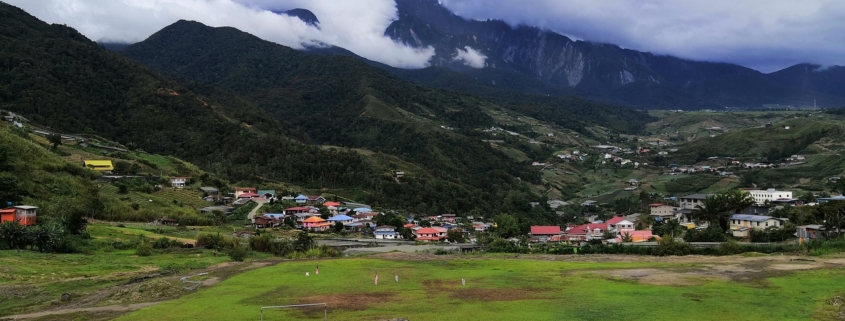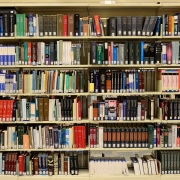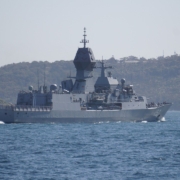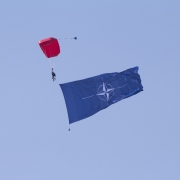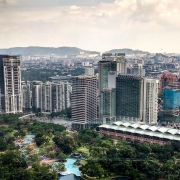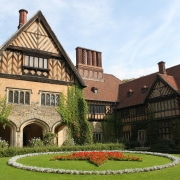Sabah Dispute: Revisited
Topic of Study [For H2 History Students]:
Paper 2: Regional Conflicts and Co-operation
Source Based Case Study
Theme III Chapter 1: Inter-state tensions and co-operation: Causes of inter-state tensions: territorial disputes
Historical Context
The Sabah dispute arose because of competing claims between the Philippines and Malaya.
For the Philippines, its formal claim was based upon a 1878 Lease signed between the Sultan of Sulu, Sultan Jamal Al Alam, and Baron de Overbeck and Alfred Dent of the North Borneo Company. An annual payment of 5000 dollars was to be made to the heirs of the Sultan.
For Malaya, its claim was based on the legal transfer of power from the British to the Malayan authorities, which later oversaw the creation of the Malaysian Federation that included Sabah.
In June 1962, the Philippine President Macapagal made his first official claim to Sabah to the British government. While tensions surfaced, attempts were made to address the dispute – the Manila Accord.
The Manila Accord
On 31 July 1963, the Manila Accord was formed, involving three parties: The Philippines, Indonesia and Malaya. From the Macapagal’s perspective, the Accord was seen as his personal attempt to mediate the dispute involving the Tunku’s announcement to form the Federation of Malaysia. The Federation was contested by both Sukarno and Macapagal due to varying reasons.
Based on the Accord, the Philippines asserted its right to claim Sabah (formerly known as North Borneo), insisting the this matter should be referred to the International Court of Justice (ICJ) for a peaceful settlement. Yet, the British and Malaya did not agree to this proposal.
A mission for naught?
As stated in the Accord, a United Nations mission would be conducted under the auspices of the Secretary-General or his representative to ascertain if a majority of the people in North Borneo wanted to be part of the Malaysian Federation. While Secretary-General U Thant led the mission to fulfil this agreement, the Tunku announced on 29 August 1963 that the Federation of Malaysia would be formed on 16 September (later known as ‘Malaysia Day’).
Enraged by this perceived breach of faith, the Indonesian President Sukarno launched the ‘Crush Malaysia’ (Ganyang Malaysia) campaign on 25 September 1963, marking the start of the Indonesian Confrontation (Konfrontasi). Although the mission report did recognise that a majority of the people in North Borneo agreed to join the Federation, Sukarno and Macapagal rejected the findings.
A short-lived pause: End of the Konfrontasi and the birth of ASEAN
After the 30 September incident (Gestapu) that marked the end of the abortive coup by the Communist Party of Indonesia (PKI), Suharto assumed control in March 1966. Five months later, Suharto signed a peace treaty with Kuala Lumpur, ending the Confrontation.
In that same year, Malaysia and the Philippines signed a joint communique (3 June 1966) to reaffirm mutual commitment to the Manila Accord for the peaceful settlement of the Philippine claim of Sabah.
In August 1967, the Association of Southeast Asian Nations (ASEAN) was formed. The claimants, the Philippines and Malaysia, were founding members of the regional association. Both parties made efforts to forge cooperation, as seen by their common agreement to fight smuggling and border crossing.
Despite several high-level talks and third-party interventions, Malaysia was not recognized by the Philippines. Ambassadors were withdrawn from each other’s capitals, and diplomatic relations were suspended. […]
President Marcos recognized the new Federation of Malaysia in June 1966, and both sides agreed in a Joint Communique to “the need to sit together” for clarifying the claim and for discussing the means of a settlement. ASEAN was created the following year, but the Sabah problem did not disappear. The importance of Sabah to the Philippines was obviously more than a mere legal claim.
An excerpt taken from “Impediments to Regionalism in Southeast Asia: Bilateral Constraints Among Asean Member States” by Hans H. Indorf.
However, bilateral relations were once again strained by a controversial incident, also known as the ‘Corregidor Affair’.
The Jabidah Massacre and the Sabah Bill
In March 1968, the Philippine authorities approved of a secret training camp on Corregidor Island. The government’s purpose was to train recruits to infiltrate Sabah and bring about a secession of Sabah from the Malaysian Federation. When these recruits refused to cooperate, they were killed by the military. A lone survivor, Jibin Arula, made known to public what had happened. It was expected of Malaysia to express outrage at this incident, viewing the operation as a gross violation of national sovereignty.
Under Oplan Merdeka, the Philippines trained a special commando unit named Jabidah that would create chaos in Sabah. The purpose of the havoc was to force the Philippine government to take full control of Sabah, otherwise, the residents therein would decide by themselves to secede from the same territory. […] According to Jibin Arula, a survivor who lived to tell the tale, there was a “mutiny in the camp in which fourteen trainees were shot dead and seventeen were missing”.
An excerpt taken from “Neighborliness: Redefining Communities at the Frontier of Dialogue in the Southern Philippines” by Fr. Erdman Beluan Pandero.
Three months after the controversial incident, diplomatic relations were suspended once more even though both parties continued to attend ASEAN-level meetings.
Marcos stood his ground as seen by the issuance of the Sabah Bill (Baseline Law) on 18 September 1968, which highlighted the claim of Sabah as part of Philippine sovereign territory. This was known as the Republic Act 5446.
What can we learn from this article?
Consider the following question:
– How far do you agree that Malaysia was more responsible than the Philippines for the Sabah dispute?
Join our JC History Tuition to learn more about Inter-state Tensions. The H2 and H1 History Tuition feature online discussion and writing practices to enhance your knowledge application skills. Get useful study notes and clarify your doubts on the subject with the tutor. You can also follow our Telegram Channel to get useful updates.
We have other JC tuition classes, such as JC Math Tuition and JC Chemistry Tuition. For Secondary Tuition, we provide Secondary English Tuition, Secondary Math tuition, Secondary Chemistry Tuition, Social Studies Tuition, Geography, History Tuition and Secondary Economics Tuition. For Primary Tuition, we have Primary English, Math and Science Tuition. Call 9658 5789 to find out more.

